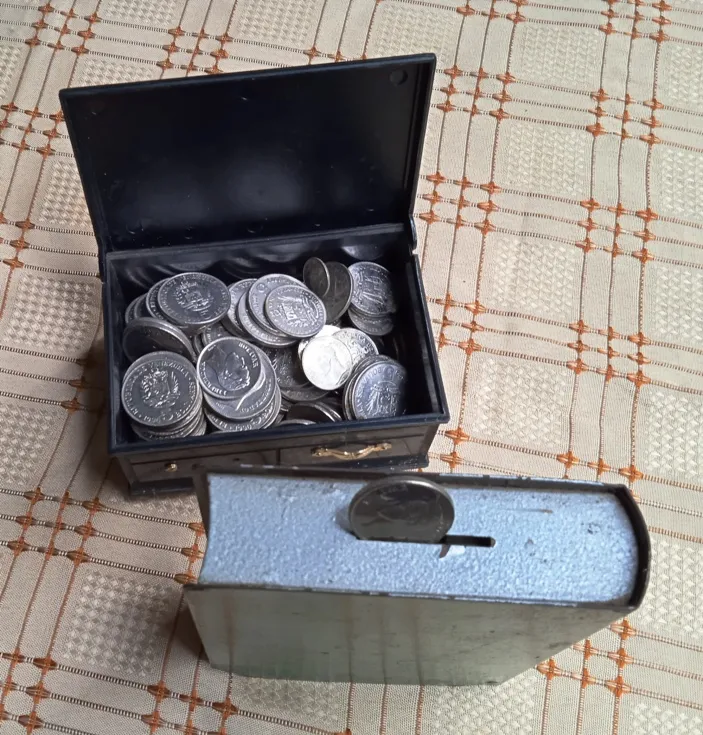
Greetings to the Economics community, and its administrator @spectrumecons, it is the first time I publish in this niche, which I think is very necessary, especially nowadays, when profound changes are taking place in the systems economic and productive planet. I must say that I am not a specialist in Economics, I vaguely remember what I studied at the University at a basic level, since it was not the career that I studied, however, the day to day, living in a country with such a strange economy Like the one in Venezuela, it makes me understand some things about this discipline empirically.

Something that has caught my attention, but not now, but about 23 years ago, was the disappearance of currencies in my country (later they reappeared but in another monetary cone and for a period of a few years). In Venezuela there has always been a relatively stable monetary cone, with very few changes, in any case the changes occurred in paper money or bills, rarely in metallic coins. This shocked me at the time, because it was common for the population to pay small expenses with coins. For example, public transportation, buying the newspaper, bread, sweets, even tickets to the movies, etc.; then, when the coins magically disappeared, to be replaced by "toy bills", I found it unpleasant. It was at that moment that I understood that little by little, something so basic for the economy of the towns, such as coins, would end up disappearing, that's why I decided to save some, and without a doubt I succeeded.

I think that one of the things that gave ordinary people security, about the strength of the country's economy, were precisely the currencies. I don't know if it will be a subjective perception on my part, but having in my hands something tangible, metallic, with a certain weight, with which to pay for daily expenses and purchases, allowed me to have some peace of mind. I think this is because as children, our parents accustomed us to having piggy banks, where we kept part of our allowance to later make some special purchase; so that one could speak of an economic imprint, to put it in some way.

As a child, I remember that I had dozens of piggy banks, made of various materials: plastic, clay, metal, etc.; and some of those piggy banks survived over time. For example, here I share a traditional clay piggy bank, in the shape of a chicken. This one has an old coin from my country inside, because this was given to me about 25 years ago and the lady who gave it to me said: "Here is a whistling coin" pointing to a coin that she put inside the piggy bank, which, according to her, would give me luck; and I think he was not wrong, because even with the terrible economic, social and institutional crisis in my country, I have never lacked livelihood, and it is not that I am a millionaire, or wealthy, nothing like that, but that I have been able to count on income always.

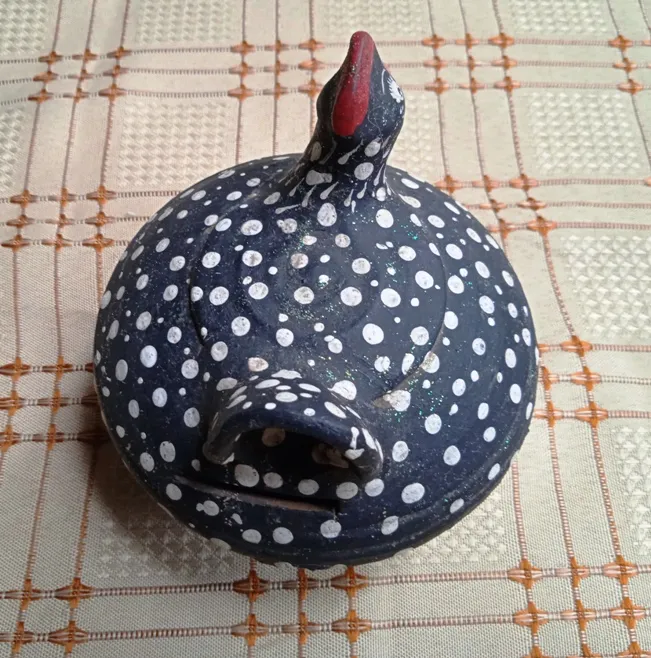

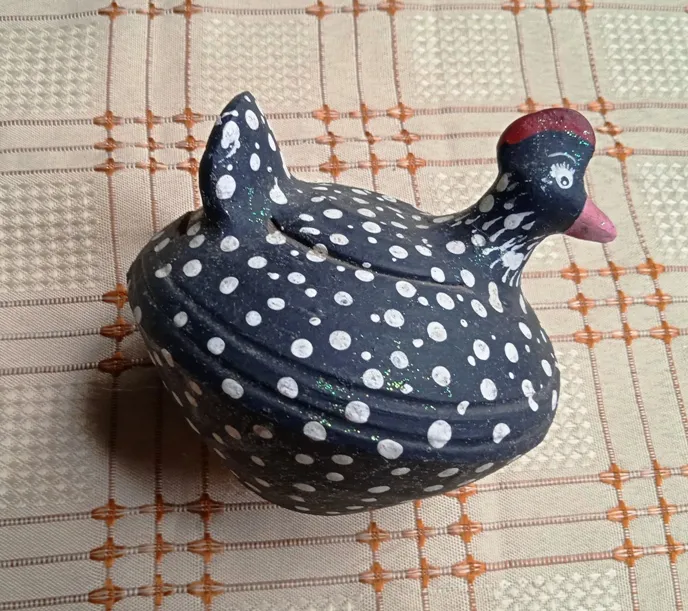

This other piggy bank in book form, is really old, it is from many decades ago, and it was a gift I received at birth. Initially, this metallic piggy bank, which has the name of the main official bank of my country at that time (Banco de Venezuela) stamped on it, was full of silver coins, which was usual before the seventies. Unfortunately I had to spend them when I was big, so it was left empty. I sold the coins for the value of their metal, the silver, not for their face value. This is unfortunate, but it's done.
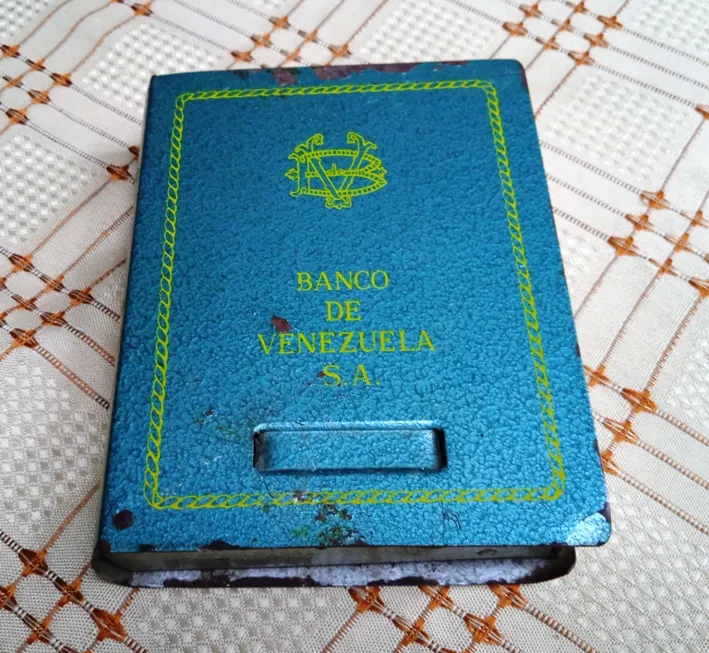
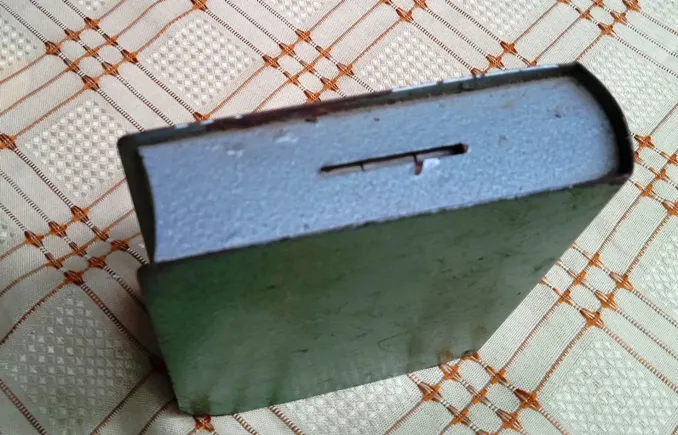
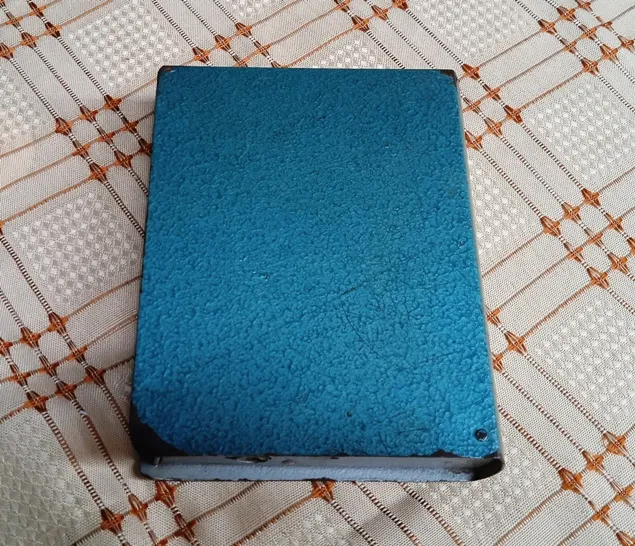
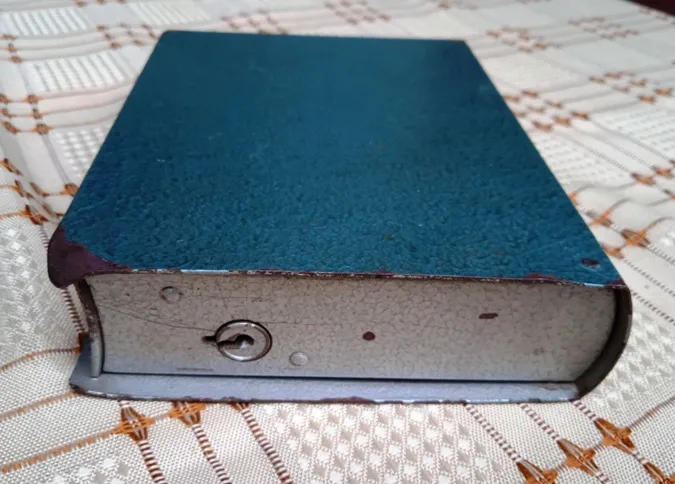
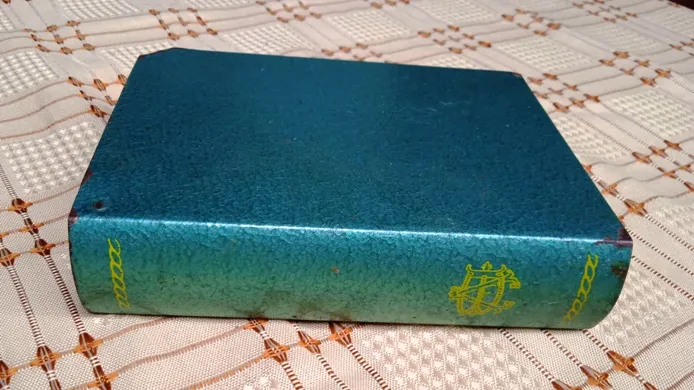

I previously commented that I decided to keep coins, because I had a feeling that they would become extinct, which happened in my country, since I think they have not circulated in Venezuela for more than 15 years (I am not sure of this information, but it is what I remember). Here is a small part of the coins that I saved, the ones that I have in a little plastic chest.
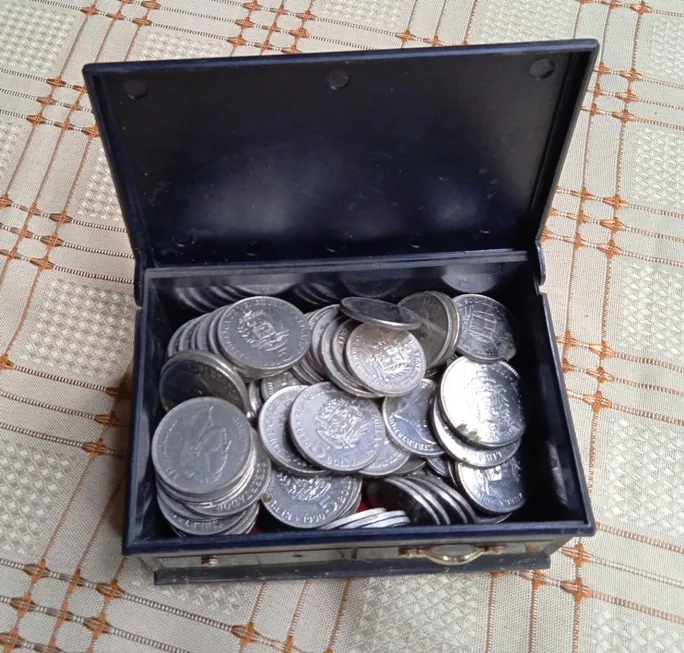

Of these coins that I kept here I show you some of the ones that made up the monetary system of my country for at least 40 years: The largest corresponds to the "fuerte" which was a 5 bolivar coin. Next in order of size and value, the 2 bolivars coin; then there is the 1 bolivar. Then there is the "real" that had a value of 0.5 bolivars; then the "medium" whose value was 0.25 bolivars. Later, there is a "puya" that would be 0.05 bolivars. When I talk about bolivars, they are those that were in force since the beginning of the second half of the 20th century in Venezuela. Currently, specifically since the entry of the communist government in 1999, infinities of devaluations have occurred, which are sometimes incomprehensible and inconceivable, and which include many negative zeros.
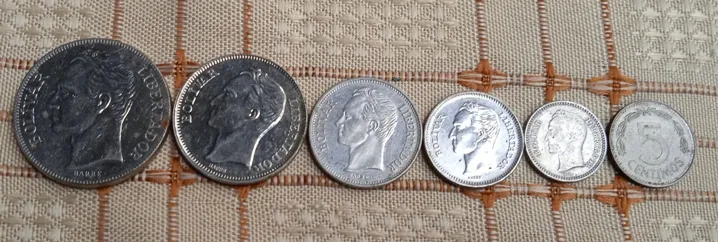


This has been my post for today. I would love to know what you think about coins and piggy banks. Do you still have coins in your respective countries? Do you consider them to be important? Did you have or have piggy banks?

These photos are my own, and were taken with a Xiomi REDMI 8 A phone
The dividers used are courtesy of @eve66 who shares beautiful designs that embellish the layout of our post.
In case it is required to use the content or images of this post and of my other publications, I would appreciate if you could refer to my authorship (Fabiola Martínez) and cite the corresponding link. Thanks.

 Delegations welcome!
Delegations welcome!Find our community here IICuration Trail

